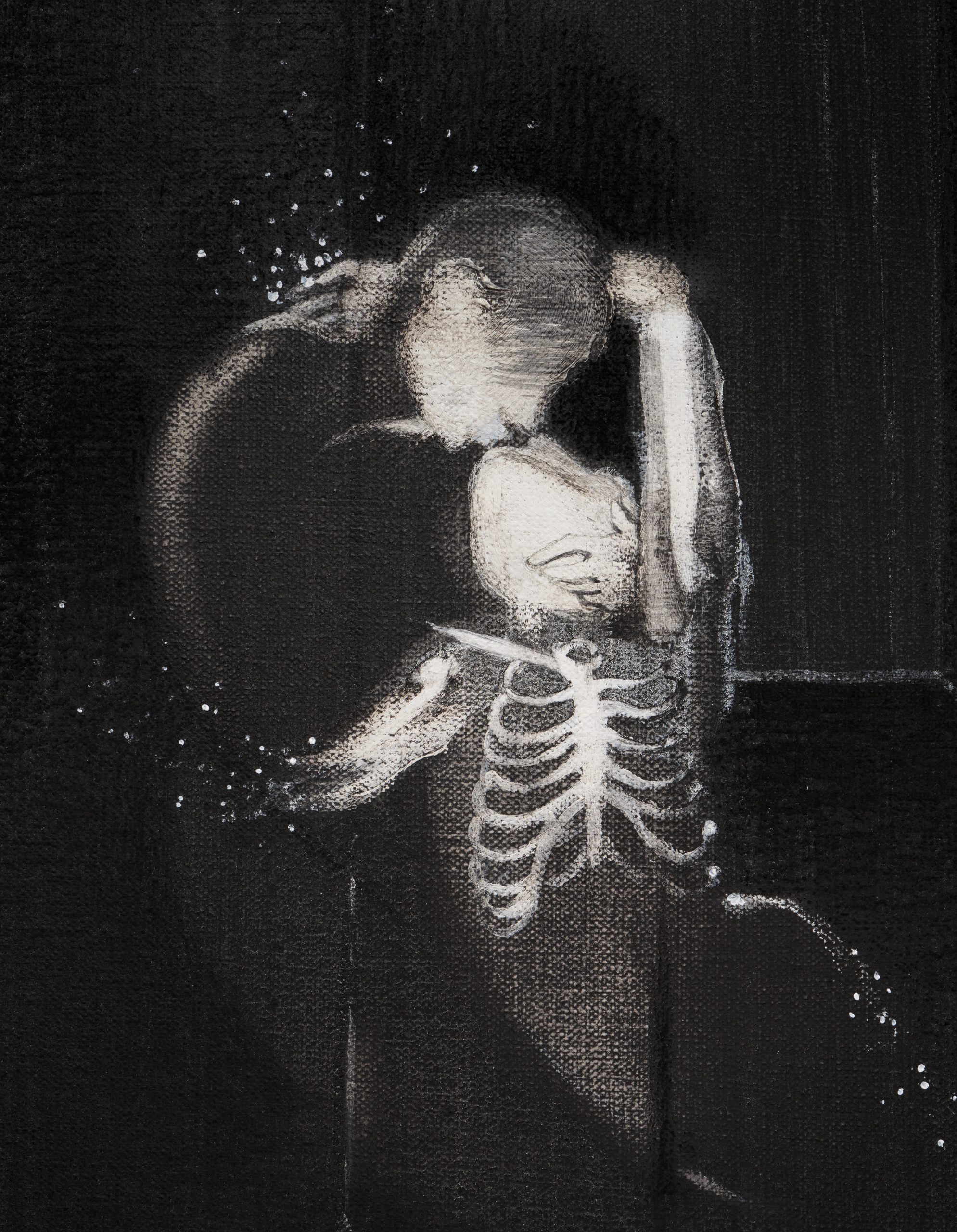LOS ANGELES — For most of us, a digital alarm is our signal to wake up. We move through our day, work past daylight hours under fluorescent lights, and commit hours to watching pixels move around a screen at night. Cindy Ji Hye Kim’s exhibition Animal Triste at François Ghebaly gallery transports us to an earlier time, taking inspiration from agrarian labor cycles illustrated in medieval calendars to reconsider the psychic connection between the body and the land.
In the front room, small-scale noir portraits depict pairs in various states of embrace. In “Animal Triste” (all works 2025), the exhibition’s namesake, we see a female figure with her arms wrapped around her lover, her ribcage illuminated from within. These quiet scenes, the press release tells us, are meant to reflect the last remnants of winter before the spring equinox, a time of year associated with planting seeds, staying indoors, and waiting for the crops to grow. This idea comes into fruition as one continues around the room, where we encounter intimate scenes depicting a mother and a child, growing together like a tree and a seed. In “Awakening,” a stark white and blue window divides the space, contrasting the dark coolness of domestic hibernation and the welcoming light of spring outside.
The second room is bifurcated with patterned birch planes that evoke the structure and use of Korean folding screens. Fittingly titled “Primavera,” these frames are machine-etched with cherry blossoms that welcome spring-time crop cycles of rebirth and harvesting. Other works in this room, such as “Fixed Sun,” “Human Design,” and “Harvester,” depict masculine laborers reaping with scythes, poised in fixed positions that convey aggressive, animalistic — sometimes violent energy. These are counterbalanced by works featuring symbolic feminine forms, such as a snake in “The Other-half of Eve,” the moon in “Buried Fire,” and a falcon in “The Falcon and the Falconer III.” Together, these archetypes of masculinity and femininity seem to recast narratives that have survived to today via oral histories, shifting the contemporary focus from the individual back to the collective.
As Kim demonstrates in her decisive portrayals of laboring bodies at their most essential points, our collective unconsciousness has always been tied to natural cycles of life, no matter how much modernity obfuscates the fact.


Cindy Ji Hye Kim: Animal Triste continues at François Ghebaly (2245 East Washington Boulevard, Downtown, Los Angeles) through April 19. The exhibition was organized by the gallery.

